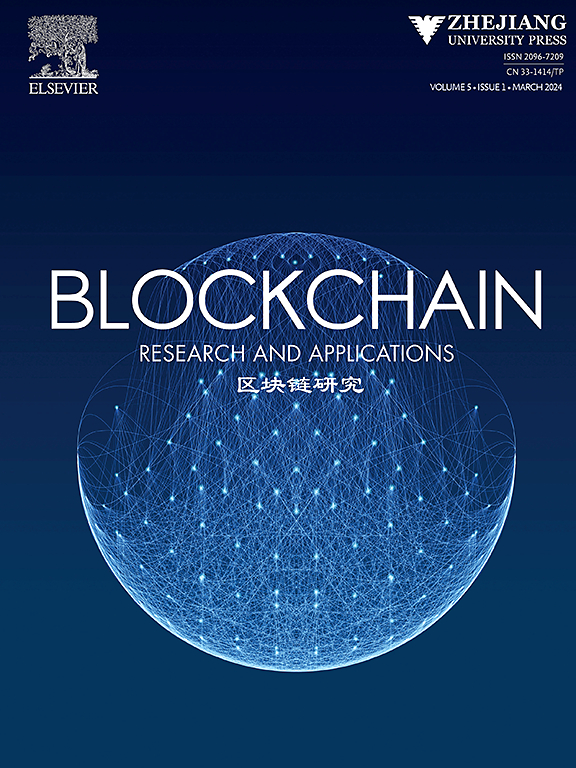区块链深部异常检测综述
IF 5.6
3区 计算机科学
Q1 COMPUTER SCIENCE, INFORMATION SYSTEMS
引用次数: 0
摘要
由于区块链技术在隐私、安全性和可信赖性方面的有效性,在过去几年见证了区块链技术在一些工作中的广泛使用。然而,网络攻击的挑战对基于该技术的系统构成了真正的威胁。以深度学习为核心的异常检测系统,也称为深度异常检测,是应对bb0网络攻击的一种合适而有效的手段。本文概述了区块链技术概念,包括区块链技术的特点、面临的挑战和局限性,以及区块链技术的系统分类。讨论了许多区块链网络攻击,如51%攻击、自私挖矿攻击、双重支出攻击和Sybil攻击。此外,我们概述了深层异常检测系统的挑战和未解决的问题。此外,本文还简要介绍了区块链环境中用于异常检测的各种深度学习方法,并介绍了几种增强异常检测系统安全特性的方法。最后,我们讨论了这些最新的先进方法的优点和缺点,根据三个类别-判别学习,生成学习和混合学习-与其他基于图的方法,我们强调了所提出的方法执行实时异常检测的能力。本文章由计算机程序翻译,如有差异,请以英文原文为准。
A review on deep anomaly detection in blockchain
The last few years have witnessed the widespread use of blockchain technology in several works because of its effectiveness in terms of privacy, security, and trustworthiness. However, the challenges of cyber-attacks represent a real threat to systems based on this technology. The resort to the systems of anomaly detection focused on deep learning, also called deep anomaly detection, is an appropriate and efficient means to tackle cyber-attacks on the blockchain. This paper provides an overview of the blockchain technology concept, including its characteristics, challenges and limitations, and its system taxonomy. Numerous blockchain cyber-attacks are discussed, such as 51% attacks, selfish mining attacks, double spending attacks, and Sybil attacks. Furthermore, we survey an overview of deep anomaly detection systems with their challenges and unresolved issues. In addition, this article gives a glimpse of various deep learning approaches implemented for anomaly detection in the blockchain environment and presents several methods that enhance the security features of anomaly detection systems. Finally, we discuss the benefits and drawbacks of these recent advanced approaches in light of three categories—discriminative learning, generative learning, and hybrid learning—with other methods based on graphs, and we highlight the ability of the proposed approaches to perform real-time anomaly detection.
求助全文
通过发布文献求助,成功后即可免费获取论文全文。
去求助
来源期刊
CiteScore
11.30
自引率
3.60%
发文量
0
期刊介绍:
Blockchain: Research and Applications is an international, peer reviewed journal for researchers, engineers, and practitioners to present the latest advances and innovations in blockchain research. The journal publishes theoretical and applied papers in established and emerging areas of blockchain research to shape the future of blockchain technology.

 求助内容:
求助内容: 应助结果提醒方式:
应助结果提醒方式:


